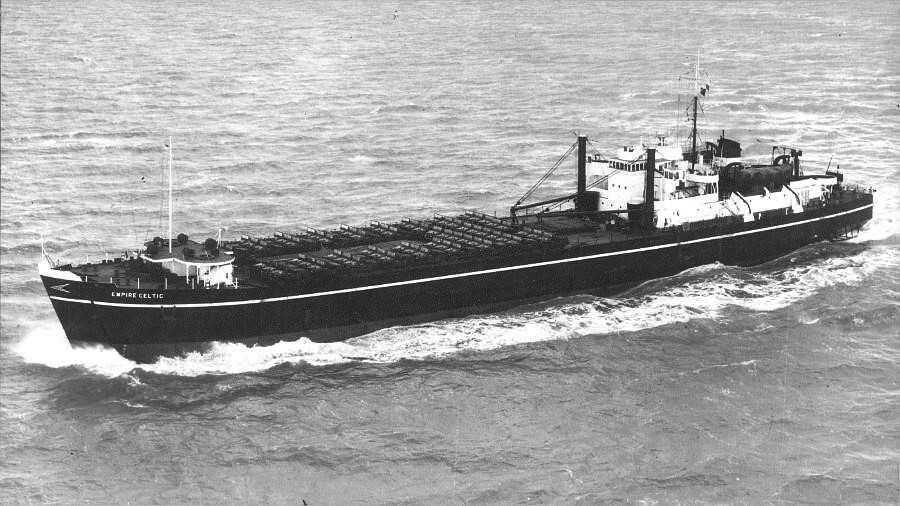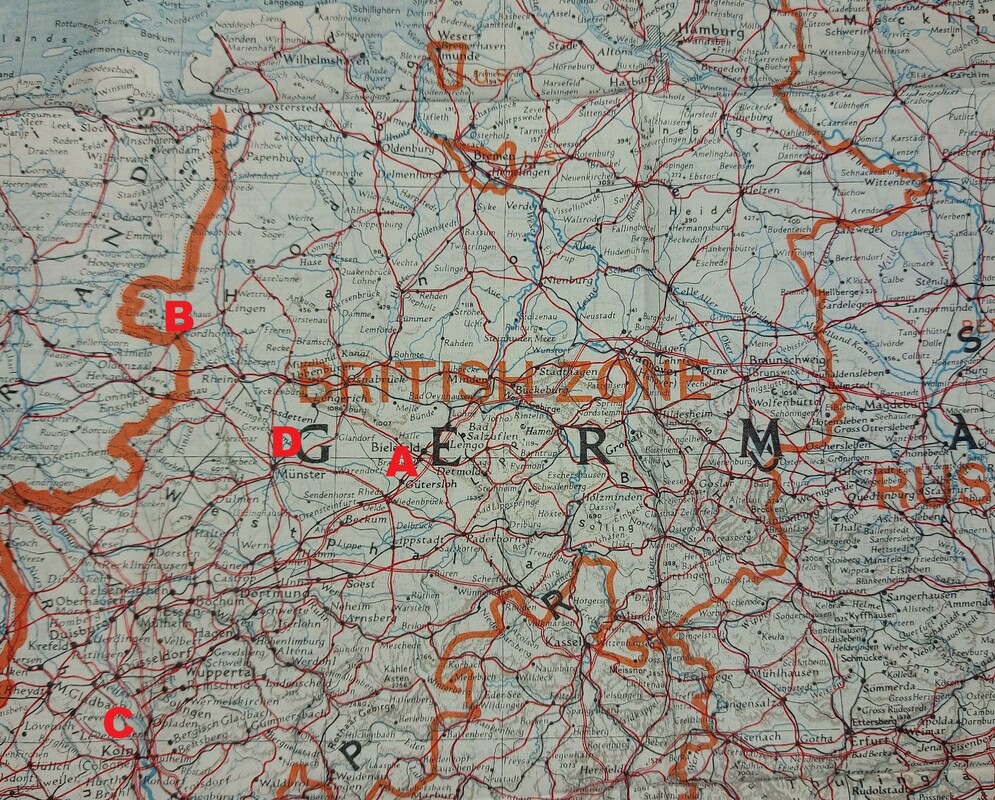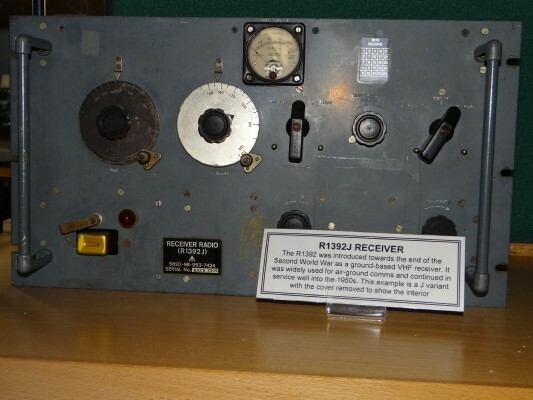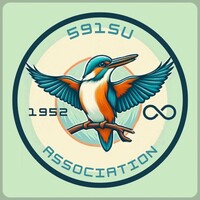EXERCISE JUNE PRIMER
or
“Ships, Trains and Automobiles!”
Ex JUNE PRIMER was held in Germany between 23-26 June, 1952 and was the first Exercise that 591 Signals Unit was deployed upon. This Exercise included a veritable prism of players. BLUELAND, which was comprised of Belgian and Dutch Units, REDLAND which was commanded by Air Officer Commanding No 2 Group and finally, to make it more exciting, WHITELAND. WHITELAND, formed from Bomber and Fighter Command along with the United States Air Force. These elements where to operate out of the United Kingdom against both REDLAND and BLUELAND. Obviously just to add that little element of chaos and complexity!
Importantly, REDLAND would be given “..facilities to obtain intelligence from radio communications between “enemy” aircraft and ground stations.” Here enters 591 SU stage left to conduct monitoring for REDLAND, the 2nd Tactical Air Force (TAF), on High and Very High Frequency radio channels.
The astute amongst you may have identified a problem, which was how to get 591 SU to the continent. Luckily a cunning plan had been developed. So long as complete M.T. records for all vehicles were maintained (which the Op order reminded them to do(!)), all would be well!
The main body of personnel from 591, excepting four Airmen (what did they do to deserve that?), departed RAF WYTHALL, in the West Midlands, on the 11th June. They travelled by train to Birmingham and finally to Harwich (via Peterborough) to take a ship to the continent. With the more extensive rail network pre the Beeching reforms, one hopes this was a relatively painless experience.
The Radio Vehicles Types (RVT) that were to be operated had departed from RAF CHIGWELL, Essex, a day earlier aiming to arrive at the Port of Tilbury at 0800 on the 10th of June after what was identified as a short two-hour drive. At Tilbury Docks they were ordered to report to “Mr French” of the “Atlantic Steam Navigation Company (Continental Line)” for carriage to Hamburg. This company operated a fleet of ex-Landing Ship Tank vessels (LSTs), one of which was the EMPIRE CELTIC, which ploughed the lucrative route between Tilbury and Hamburg moving military cargo (picture 1). The trip by ship took around a day to complete and no doubt was one reason why Junior Tech Sanders and SAC Fair were issued with 48 hours of rations for consumption on the voyage to Europe.
In total eight Radio Vehicle Type vehicles embarked and crossed to the continent. These RVTs were to provide a number of different capabilities, including power generation. Of note, three radio direction finding vehicles (RVT 105) also went.

Picture 1. EMPIRE CELTIC was the ATLANTIC STEAM NAVIGATION CO. ship that plied the TILBURY - HAMBURG route, so most likely to have transported our RVT vehicles to HAMBURG (Found on the www.rfanostalgia.org website).
“Immediate Operational Value.”
After arrival in Germany personnel and vehicles dispersed to the sites from which the exercise activity would be conducted. As far as we can tell from records, direction finding vehicles moved to three separate locations, the monitoring vehicles were established at RAF HANDORF and a liaison officer was posted at No 2 Group HQ at Sundern, Gutersloh. This was an area that would be big in the RAF world for the next forty years. Sundern itself sat near the Tactical Air Force operational airfields, meaning it had good communications with them. As the other 591 elements’ siting choices were driven by domestic “requirements” it’s assumed these were RAF stations (Picture 2.), some becoming locations the Unit would return to again within the next few years. In position, they waited to ply their trade for the days of the Exercise.

Picture 2. Locations of the components of Ex JUNE PRIMER. “A” is the Triangulation Room and Intercept Liaison Officer, at SUNDERN (Gutersloh). RVT 105 Direction Finding Teams were at “B” RAF NORDHORN, “C” RAF BUTZWEILERHOF (COLOGNE) and “D” at RAF HANDORF. The VHF and HF receivers and the traffic analysts where co-located at “D” with the Direction-Finding team. (Silk Map 1952 War Office, Authors collection).
Whilst we don’t have a record of day to day life the post-exercise report clearly explains what sort of information the monitoring stations and analysts were providing REDLAND during the exercise. The monitoring teams ploughed a diligent trade as intelligence obtained from radio interceptions of enemy force communications included weather, aircraft activity and landing conditions which were fed to the 2 TAF HQ. When received this was deemed to be extremely valuable, with only the lack of adequate interdiction aircraft affecting the ability to exploit the information.
In addition, at the end of each day a report was issued to a Senior Intelligence officer, with the first report from D+1 being full of juicy content. This information included enemy headquarters being identified as being at two locations, one of which was at the Hague. In addition, Squadron Call Signs were linked to Squadron numbers with “SWEEPSTAKE” believed to belong to 326 Squadron, of the Netherlands Royal Air Force, which operated Meteor jets. “LITHESOME” was connected to 14 Sqn, who operated Vampire Fighter Bombers out of RAF FASSBERG. In addition, BLUELAND ground stations had been identified, with “VIRUS” being “VOLKEL” and PRETTY being “GILZERIJEN”. On top of this, the identification of two BLUELAND “Nets” proved invaluable in allowing an assessment of the enemy’s order of battle.
Also deployed was a direction-finding capability and three of these RVT 105 vehicles and their teams were utilised on this exercise. Reminiscent of the Battle of Britain, the three sites sent bearings from enemy radio contacts direct to plotters staffing the triangulation table at the HQ at Sudern. The resulting hard sums and maths resulted in a position which was then passed to the Intercept liaison officer meaning aircraft such as the Meteor fighter (see picture 3) which equipped some RAF squadrons at the time, could be directed to the enemy aircraft so they could be intercepted and thwarted.

Picture 3. A Meteor Night Fighter 11, a fighter that was flown by 68 SQN, who were based in Germany at the time of EX JUNE PRIMER © IWM ATP 19409B
But what of WHITELAND forces? These did not escape the scrutiny of the monitoring teams’ “watchful” ears. Two bomber groups were identified operating from WADDINGTON, SCAMPTON and CONINGSBY, for example. With more time, one wonders what else the team would have gleaned.
The inevitable wash up
As well as suggesting altering placement of personnel and the plotting room arrangement for intercept management, there were other “Recommendations” in the exercise report. An important one for morale and protecting equipment was that some form of office trailer should be deployed for the Traffic Analysis section. It was found the tents used were not suitable for fine but windy days and were even worse during rain, being called in fact “most unsatisfactory.” In addition, camouflage netting should be taken as having to lay branches and small trees on the tent to hide it had caused water to leak and drip through the single sheet fabric. That dreaded feeling of being in a tent and realising something has been touching part of the fabric and you are now in a puddle…
From a technical perspective the RVT 187 vehicle had not been a smashing success due to the equipped AR 1392 radios (see picture 4) being not totally suitable for the task at hand, as a tuneable receiver, as opposed to crystal type, would have been better. In the “olden days”(!) some radios used crystals that allowed them to access a specific wavelength of signals. This was finicky to tune and relied on having the right crystal for the bands you were working with.

Picture 4. The R 1392 receiver, similar technology to the radio that was listed as being installed in the Units RVT 187. This receiver was found to be less effective than required during EX PRIMER due to difficulty tuning it (Photo Courtesy of the RAF Signals Museum, RAF HENLOW).
No mention is made of how successful the use of the X524 tape recorder in the RVT had been, but this was cutting edge technology back then with tape recorders largely not being available to the public. Despite all this, the RVT 187 model itself was a success as an RVT 187 MK II was developed for the unit in the early 1960s.
One of the most interesting points that I am sure still rings true to many was “in future continental exercises as much warning as possible is required… so that the complete movements from the…U.K. to exercise area and back to base…[can] be planned.” This final point aside, the Unit had successfully deployed.
Echoes of war.
On the 6th of July the Unit returned to RAF WYTHALL from Germany, having been successfully employed in Exercise “JUNE PRIMER”, to commence monitoring activities.
There had been one single, prominent, thread running throughout the exercise. That is, it was only seven years and one month after the war in Europe had ended. All the personnel on the unit would have grown up during or have participated in the Second World War and experienced rationing, with rationing itself not fully ceasing until 1954. This is easily forgotten by us today. RAF WYTHALL, where 591 SU formed had been “No.6 Barrage Balloon Centre” with the responsibility for the balloon defence of the southern part of Birmingham and Coventry and RAF CHIGWELL had had been an important part in the RAF’s wartime Signal organisation. It had generated Units (including Mobile Signals Security Units) and dispatched them to Europe. The RVT 105 as a system had also been deployed in the war and even the AR 1392 radio receiver was wartime technology. The first Officer Commanding of 591 SU itself, Flt Lt Ryder, had served during the war, receiving a wartime commission after a not insignificant pre-war career.
So, as the Unit exercised for the next conflict the echo of world events was still surrounding them. This is something to consider, that seventy years on as these things fade, 591 SU holds an unbroken link with this time.
Written and researched by the 591 SU Historian.

